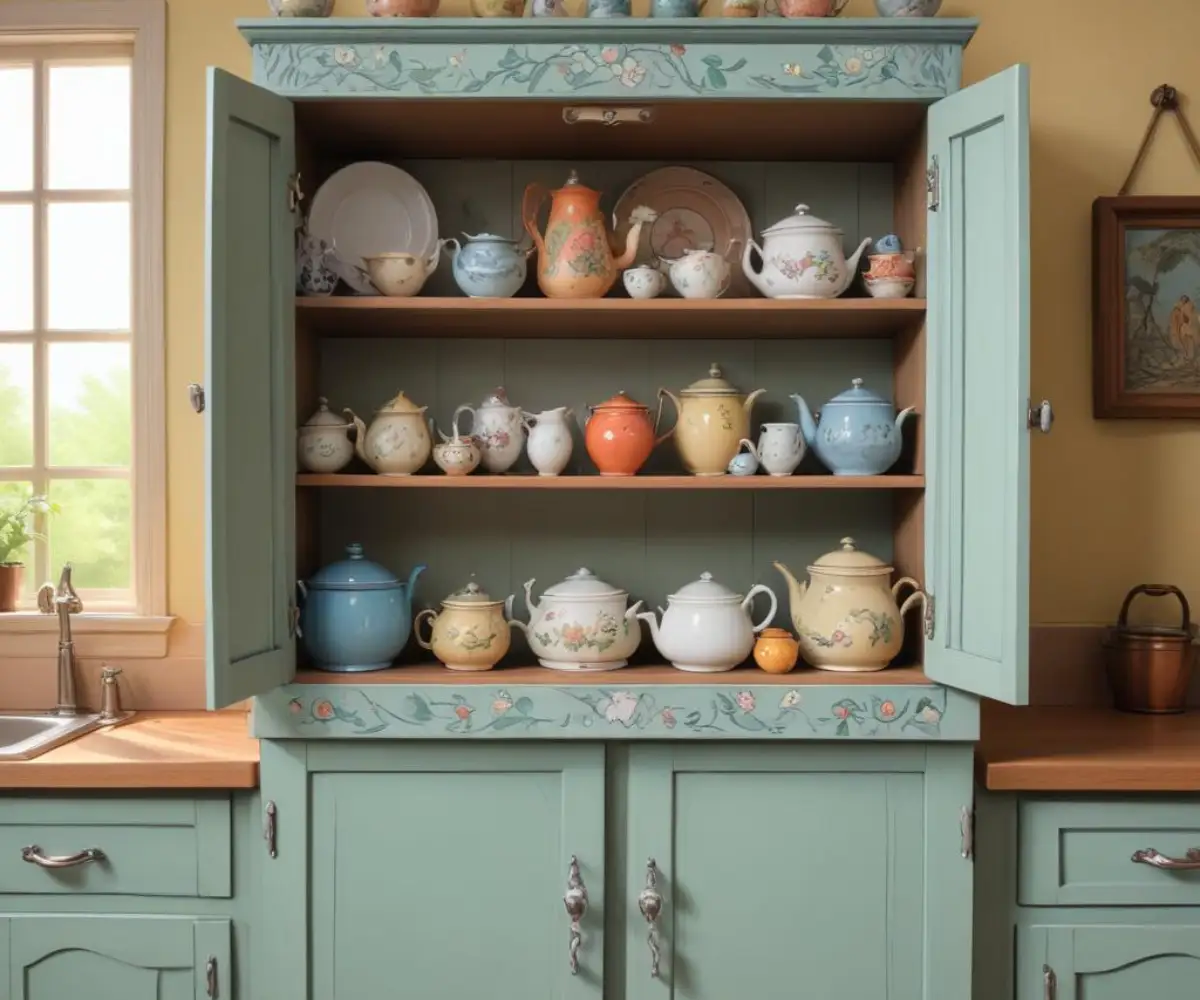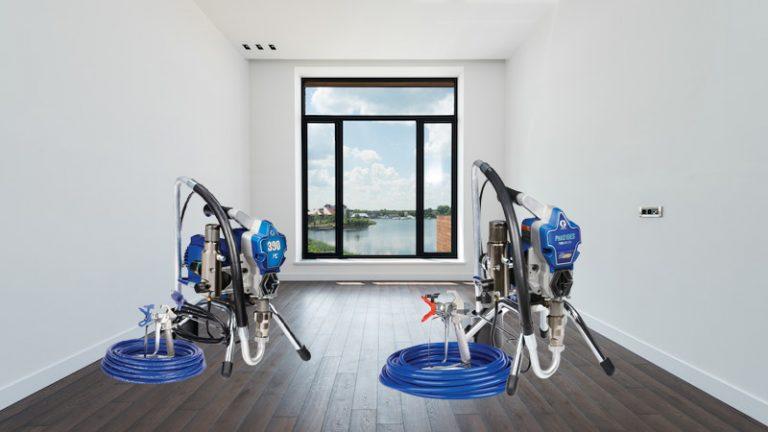Behr vs Valspar Cabinet Paint: The Showdown Your Kitchen Needs
You’re standing in the paint aisle, staring at a wall of infinite colors, and a decision paralysis kicks in. You’ve decided to tackle one of the most transformative DIY projects: painting your kitchen cabinets. But the initial excitement is quickly replaced by a daunting question—which paint will give you that durable, factory-smooth finish you’re dreaming of?
For most homeowners, the choice boils down to two heavyweights readily available at big-box stores: Behr and Valspar. Picking the wrong one doesn’t just mean a bad color; it could mean chipping, peeling, and a redo of hours of painstaking work. This is the core problem: a lack of clear, real-world comparison between the specific cabinet enamels these brands offer, leaving you to guess which can will truly protect your investment and sanity.
This guide will break down the critical differences between Behr’s and Valspar’s flagship cabinet paints. We’ll go beyond the marketing claims on the can and dive into what truly matters: durability, application, finish, and overall value, so you can make a confident choice and achieve a stunning, long-lasting result.
You'll Learn About
Meet the Contenders: The Go-To Cabinet Paints
When you’re painting cabinets, you can’t just grab any can of wall paint. You need an enamel—a paint that dries to a hard, durable shell, capable of withstanding the daily abuse of a high-traffic kitchen. Both Behr and Valspar offer specialized products designed precisely for this task.
Behr Cabinet, Door & Trim Enamel
Available exclusively at The Home Depot, Behr’s Cabinet, Door & Trim Enamel is a water-based alkyd paint. This hybrid formula aims to provide the best of both worlds: the superior hardness and self-leveling of an oil-based paint with the easy cleanup and low odor of a water-based latex. It’s specifically marketed for its ability to resist dirt, grime, and mildew, making it a popular choice for kitchen and bathroom projects.
Valspar Cabinet and Furniture Paint
Found at Lowe’s, Valspar’s Cabinet and Furniture Paint is also a hybrid, often described as an oil-enriched enamel. It promises a “strong, factory-like finish” that is fade, scratch, and scuff resistant. Valspar heavily promotes its smooth application and often claims no top coat is needed, which is a major selling point for DIYers looking to simplify the process. Its formula is designed to be tough enough for daily wear and tear without the hassle of traditional oil paints.
The Ultimate Face-Off: Behr vs. Valspar on Key Factors
A successful cabinet project hinges on more than just color. Performance is everything. Here’s how these two paint giants stack up in the areas that matter most for a cabinet refresh.
Durability and Hardness: Which Finish Survives Family Life?
This is arguably the most critical factor. Kitchen cabinets are constantly opened, closed, bumped, and wiped down. You need a paint that cures to a rock-hard finish.
Behr’s enamel is known for its durability once fully cured. However, some professional painters have noted that it can be susceptible to scratching if exposed to oils (like those from hands) before it has had weeks to harden completely. While it provides a tough shell, the curing process is a marathon, not a sprint.
Valspar’s formula also boasts excellent hardness due to its oil-enriched technology. Users often report a very durable finish that resists chipping and scuffs well over time. The key with Valspar, like Behr, is allowing adequate cure time. Rushing this step is the number one cause of failure for both paints.
Application and Self-Leveling: The Secret to a Brush-Stroke-Free Finish
A smooth, professional look is the goal, and this comes down to how the paint flows and levels. You want a paint that minimizes brush and roller marks on its own.
Behr is often praised for its excellent self-leveling properties. It has a good consistency that isn’t too thick or thin, allowing it to be worked with a brush or roller without drying too quickly. This extended “open time” helps brush strokes settle and disappear as it dries.
Valspar is sometimes described as being thinner in consistency. While this helps it level out beautifully, it can also make it prone to drips and runs if applied too heavily. It requires a bit more finesse to avoid sags, especially on vertical surfaces like cabinet doors.

Coverage and Coats: How Far Does a Gallon Really Go?
Better coverage means fewer coats and less work. Both paints are paint-and-primer-in-one products, but this claim should be taken with a grain of salt when painting cabinets.
Behr’s paint is generally considered to have average-to-good coverage. When painting over a properly prepared and primed surface, two coats are almost always necessary for a solid, even color. Some users note that covering a very dark surface with a light color might even require a third coat.
Valspar also typically requires at least two coats for a uniform finish. Because it can be a thinner paint, it’s especially important not to over-spread it in an attempt to get one-coat coverage, as this can lead to an uneven sheen and potential adhesion problems.
Dry Time vs. Cure Time: The Most Misunderstood Part of Cabinet Painting
This is a critical distinction that trips up many DIYers. Dry time is when the paint is dry to the touch (usually a few hours). Cure time is when the paint has reached maximum hardness, which can take days or even weeks.
Behr’s enamel is typically dry to the touch in 2-4 hours, and you can recoat after about 4 hours. However, the full cure time can be 7 days or longer. During this period, the paint is still vulnerable to scratches and dings.
Valspar’s newer formula has a recoat time of about 4 hours, a significant improvement over its older 8-hour formula. Still, a full cure takes time. Users who experience “blocking”—where doors stick to the cabinet frame—have often not waited long enough for the paint to fully cure before re-installing them.
Price and Value: Cost Per Gallon
When comparing prices, Behr and Valspar are very competitive and fall into a similar range. Behr’s Cabinet, Door & Trim Enamel and Valspar’s Cabinet and Furniture Paint are typically priced similarly per gallon. While one might be slightly more expensive than the other depending on sales and location, the overall project cost difference is usually minimal. The true value comes from performance and durability, as having to repaint in a few years is far more costly than a few extra dollars per gallon upfront.
The Tale of the Tape: Behr vs. Valspar Head-to-Head
For a quick overview, this table breaks down the key attributes of each paint based on extensive research and user reviews.
| Feature | Behr Cabinet, Door & Trim Enamel | Valspar Cabinet and Furniture Paint |
|---|---|---|
| Formula Type | Water-Based Alkyd | Water-Based Oil-Enriched Alkyd |
| Durability | Excellent once fully cured, but can be vulnerable during the long cure time. | Very good; creates a hard, scuff-resistant finish. |
| Application | Good flow and self-leveling; less prone to drips. | Excellent self-leveling but thinner consistency can lead to runs if over-applied. |
| Recoat Time | Approx. 4 hours | Approx. 4 hours (new formula) |
| Full Cure Time | 7+ days | 7+ days |
| Cleanup | Soap and water | Soap and water |
| Retailer | The Home Depot | Lowe’s |
The Perfect Paint Job is 90% Prep Work
No matter which paint you choose, it will fail without meticulous preparation. This is the most important part of the entire project. Do not cut corners here.
Step 1: The Brutal Clean (Degreasing)
Kitchens are greasy environments. You must remove every trace of oil, food residue, and cleaning product buildup. Use a dedicated degreaser like TSP (Trisodium Phosphate) or a strong substitute. Scrub every square inch, including crevices and corners.
Step 2: The Scuff Sand (Giving the Paint Something to Grip)
You don’t need to strip the cabinets down to bare wood, but you must remove the glossy finish. A light but thorough sanding with 180-220 grit sandpaper is non-negotiable. The goal is to create a dull, slightly rough surface that the primer can bite into.
If you encounter layers of old, stubborn paint, you might need a more aggressive solution. Understanding different products, like in a Citristrip paste vs gel comparison, can prevent hours of wasted effort. The same principle of careful removal applies to other surfaces; knowing how to remove paint from aluminum window frames, for instance, requires specific techniques to avoid damage.
Step 3: Priming for Success (Don’t Skip This!)
Even though the paints are “paint and primer in one,” you must use a separate, high-quality bonding primer. This is especially true for glossy or dark-stained cabinets. A shellac-based primer like Zinsser BIN or a strong adhesion primer like Kilz Adhesion will ensure your topcoat sticks and prevent tannins from the wood from bleeding through and yellowing your beautiful white paint job.
The Final Verdict: Which Cabinet Paint Should You Buy?
After a deep dive into the details, the truth is that both Behr and Valspar offer excellent cabinet paints that can deliver a professional-grade finish. The “better” option truly depends on your priorities and working style.
Choose Behr If…
You prioritize a slightly thicker paint that is less likely to run on vertical surfaces and you are patient enough to wait for the extended cure time. If you’re a meticulous painter who values excellent self-leveling and shops at The Home Depot, Behr is a fantastic and reliable choice.
Choose Valspar If…
You are confident in your application technique and want a paint that flows out to a glass-smooth finish. If you work carefully to avoid drips and appreciate the convenience of shopping at Lowe’s, Valspar will reward you with a stunning, durable result.
Ultimately, the best paint in the world won’t save a poorly prepped surface. Your success hinges on cleaning, sanding, and priming correctly. Of course, even the greatest paint job can’t hide structural issues. If you are considering a full replacement, digging into some NorthPoint Cabinets reviews might provide insight into your foundational options before you even think about color.
Both Behr and Valspar have engineered impressive products that bring professional results within reach of the determined DIYer. Choose your brand, commit to the prep work, and get ready to transform your kitchen.

